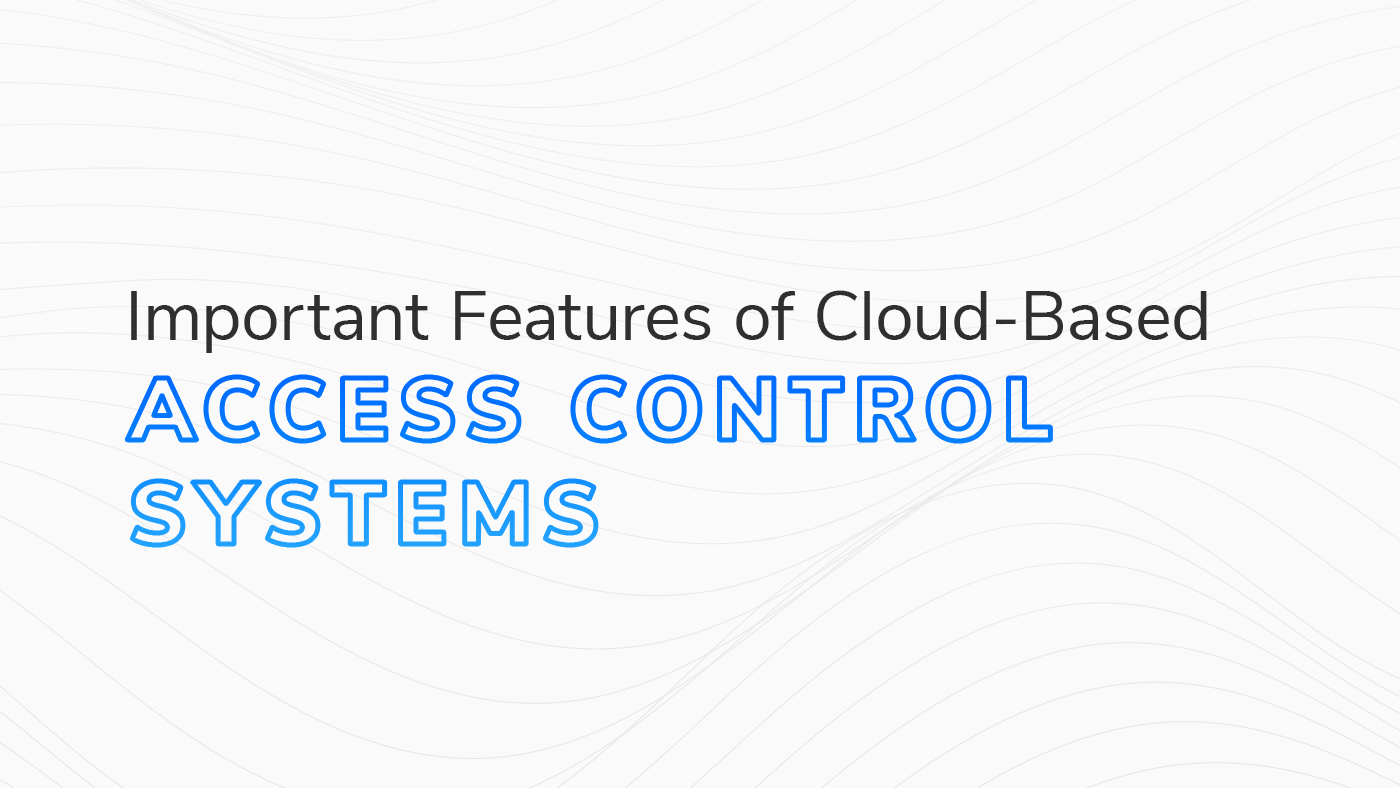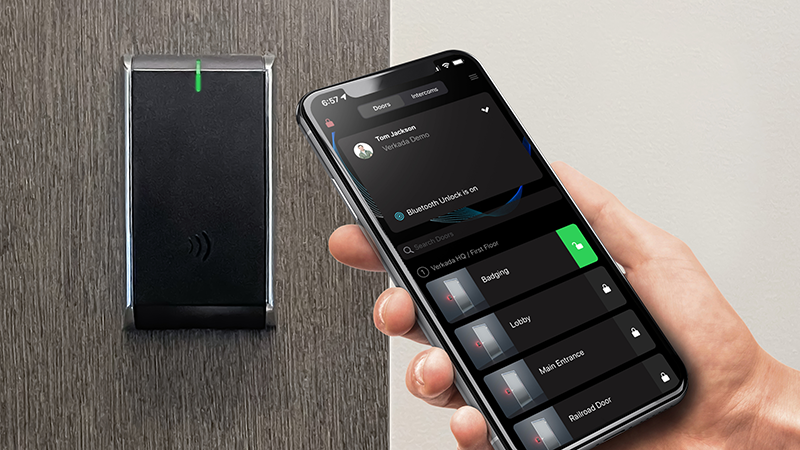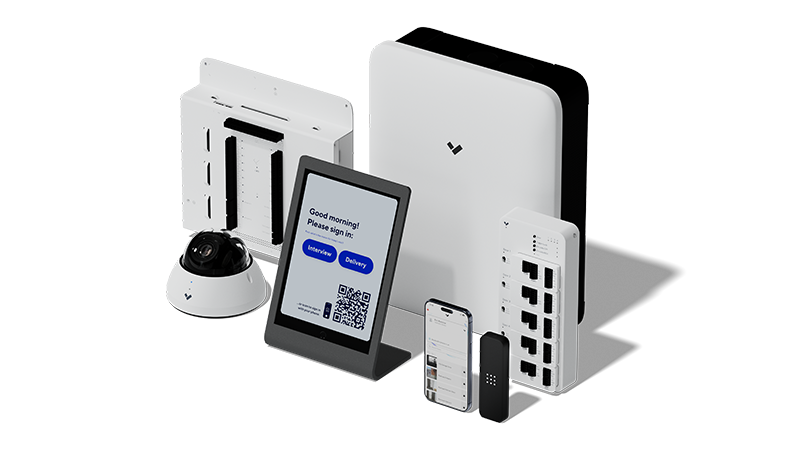What to Look for in a Cloud-Based Access Control System

Who does and does not have access to a building is one of—if not the—most important responsibilities of a physical security team. Keeping physical spaces safe is as critical as ever—and frankly, most current access control systems are not good enough.
The rise of hybrid work has also shifted the way we think about access control. Today, 53% of organizations are looking to implement a more flexible and secure system that allows employees to come and go as needed to keep pace with the changing demands of workplace variability and security.
If you’re here, you probably already know it’s time to upgrade your access control system—and you’re likely exploring a cloud-based approach to security. As you look to future-proof your system, understanding the benefits of a cloud-based approach is key to making the right decision.
In this article, we’ll walk you through the things you should be looking for in a cloud-based access control system—helping you make an informed choice that improves security, boosts efficiency, and integrates with your existing setup.
Exploring Cloud-Based Access Control: What You Should Know Before Upgrading
Making the move to a cloud-based access control system can feel like a big step—one that comes with questions about compatibility, cost, and security.
But it doesn’t have to be a leap of faith. By knowing what to look for in a cloud-based access control system, you can feel confident in your decision—and we’ll help you feel more at ease as you navigate through the decision process.
Cloud-Based Access Control is the Present and Future
Enterprise cloud-based solutions are the new standard for physical security systems. And with many organizations looking to upgrade access to their facilities—a direct result of more flexible working environments—there is greater demand for better control over who enters and exits your buildings.
Traditional on-prem systems simply aren’t equipped to handle the current complexities of the physical security landscape—let alone the challenges of the future. The cloud offers features that can drastically improve your security posture, from managing multiple locations to reducing the time and effort it takes to grant or revoke access.
Some of the questions you might be asking could include:
- How can a cloud-based solution improve our existing setup?
- What kind of integration challenges will we face?
- Will a cloud-based system actually deliver the ROI we’re aiming for?
- And most importantly—will this keep my people and facilities safer?
HBS has lived in the physical security space for years. We’ve asked these same questions—and more—and want to offer our expert take on how cloud-based access control systems work and what you should look for in the best ones.

What You Should Expect in a Great Cloud-Based Access Control System
When evaluating cloud-based access control systems, we recommend keeping these core features in mind. They’ll allow you to maximize your investment and help future-proof your physical security setup.
1. Remote Management Capabilities
One of the biggest advantages of cloud-based access control is the ability to manage everything remotely. Whether you're monitoring multiple locations or need to grant access to a team member after hours, a good cloud-based system should allow you to control everything from a smartphone, tablet, or computer—anywhere with an internet connection.
This flexibility is essential, especially in hybrid work environments where staff, contractors, or vendors might need access irregularly. The ability to manage your access control system remotely, revoke permissions in real time, and keep tabs on entry logs can greatly reduce your response time to potential security incidents.
Some on-premise solutions do offer remote management, but we’ve found that the deployment process tends to be more difficult, expensive, and can sometimes come with security risks—such as punching holes in firewalls.
2. Lockdown Ability
Lockdown procedures are now a crucial part of most organizations' threat response plans—whether in businesses, schools, or government institutions. The key to an effective lockdown is speed, and relying on someone to physically lock doors or access the building’s control system can create dangerous delays.
When evaluating cloud-based access control systems, make sure they offer remote lockdown capabilities. Systems must allow security teams to initiate a lockdown instantly from any computer or mobile device, ensuring a faster, more efficient response when it matters most.

3. Integration with Other Security Systems
A major concern for many is how well a new cloud-based system will fit with existing security infrastructure. The right system should integrate seamlessly with your current technologies, such as mass notification systems, video management systems, and alarm systems.
At HBS, we specialize in integrating these systems to work together, ensuring that your access control system communicates effectively with your entire security ecosystem. This integration gives you a more holistic view of your security situation—whether you’re reviewing footage in tandem with access logs or sending out real-time alerts through mass notifications when an entry is flagged.
4. Scalability and Flexibility
When selecting a cloud-based access control system, think long-term. The system you choose today should be able to grow with you as your organization expands. Look for options that offer flexibility—whether you plan to add new buildings, need to manage access for a growing workforce, or handle multiple locations.
5. Enhanced Security Features
At the end of the day, security is the top priority. A cloud-based system should enhance your ability to protect your facilities, offering features like:
- Real-time monitoring and alerts: Instant notifications if something unusual happens, allowing you to respond quickly to potential security threats.
- Audit trails: Detailed logs of who accessed your facilities and when, providing a comprehensive record for compliance or incident review.
- Two-factor authentication (2FA): Adding an extra layer of protection by requiring admins to provide two forms of authentication before accessing the system, ensuring that only authorized personnel can manage access credentials and settings.
These features can drastically reduce the chance of security incidents, keeping your assets and people safer while simplifying your monitoring efforts.
Addressing Common Concerns
Cost and ROI
The upfront costs of implementing a cloud-based system might give you pause, but it’s important to look at the bigger picture. Traditional systems often require costly on-site hardware and regular maintenance, while cloud-based systems reduce those costs by moving much of the infrastructure off-site.
With cloud systems, you’re also investing in scalability—paying only for the features you need now while leaving room to grow. Many cloud-based providers offer subscription-based pricing that adjusts as your needs evolve so your costs remain manageable over time.
Compatibility with Existing Systems
As mentioned earlier, a top concern is how a new system will integrate with the technology you already have. This is where working with an expert partner like HBS can really make a difference. We understand the complexities of physical security integration and can ensure that your access control system works smoothly alongside your existing video, alarm, and notification systems. This approach maximizes the value of each system, creating a more secure and manageable environment.
Security and Privacy Concerns
Moving your access control to the cloud might raise concerns about privacy and security. However, modern cloud-based systems come equipped with advanced encryption and security protocols to protect your data and prevent unauthorized access.
Always look for a provider that offers regular updates, strong encryption, and third-party audits to ensure your system is as secure as possible.

Let’s Secure Your Future Together
At HBS, we understand that making the move to cloud-based access control is a big decision. But with the right system—and the right partner—the transition can deliver a stronger, more secure environment for your organization.
Let us help you integrate access control with the rest of your security systems to build a future-proof solution that works for you.
Contact us today to learn how we can make your move to the cloud a success.






